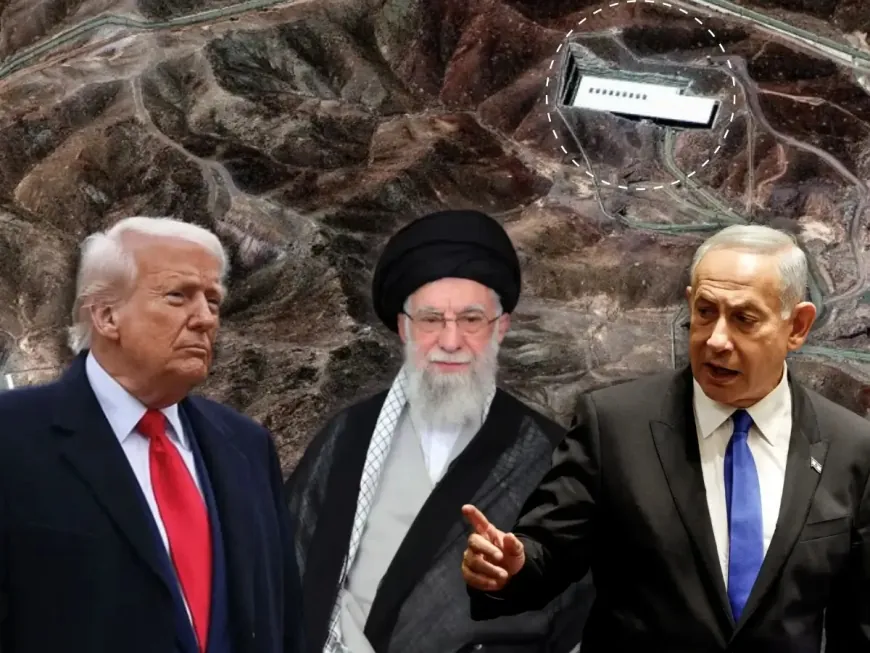Iran Threatens Oil Shipping Chaos After U.S. Airstrikes
Iran may retaliate against U.S. airstrikes by targeting oil flows in the Strait of Hormuz, raising fears of global energy disruption and price surges.

As U.S. airstrikes hit Iranian nuclear sites and diplomatic backchannels fall silent, Tehran is facing mounting pressure to respond—this time with real consequences. At the center of global concern sits the Strait of Hormuz, a maritime bottleneck responsible for nearly 20% of the world’s daily oil flow. No longer just a geopolitical bargaining chip, Hormuz now stands as a flashpoint with real economic risk.
In past standoffs, Iran has wielded the threat of disruption more as theater than tactic. But analysts warn the current calculus has changed. With its nuclear ambitions under direct attack and few viable paths for de-escalation, Iran could move beyond bluster—forcing oil markets and global powers to confront a worst-case scenario that once seemed improbable.
A Regional Flashpoint
Tehran's strategic advantage lies in its geographical control of the northern coast of the Strait of Hormuz, enabling it to threaten shipping with a range of military and asymmetric tools. These include maritime harassment, drone attacks, sea mines, and signal jamming. Although an all-out blockade remains unlikely due to the risks involved, partial disruptions are now seen as a viable possibility.
In response to rising tensions, Greece's shipping ministry on Sunday issued new guidance urging Greek-owned vessels to reconsider passage through Hormuz. Meanwhile, traffic through the strait had continued relatively uninterrupted through last week, and Iran’s own oil exports have actually increased, underscoring the delicate balance Tehran is trying to maintain between retaliation and economic self-preservation.
Tehran’s Toolbox: From Harassment to Strategic Strikes
Iran has a variety of tools it could employ to disrupt oil flows without fully closing the strait. Past incidents have shown how Tehran has intercepted foreign tankers or directed them into Iranian waters, triggering diplomatic standoffs. Heightened harassment of commercial shipping—such as shadowing vessels with small patrol boats—could significantly raise the cost and complexity of maritime logistics in the region.
Beyond ship harassment, the Iranian military is reportedly capable of using GPS signal jamming, a tactic already affecting nearly 1,000 commercial vessels daily since June 13. This form of electronic warfare hampers navigational safety and was cited as a potential factor in a recent oil tanker collision, which, while publicly deemed unrelated, occurred shortly after Israel's strikes on Iranian targets.
Another escalatory option includes the deployment of sea mines. Though a more dangerous move due to the risk to Iran’s own shipping, selective mining could create deterrents without full-scale confrontation. A 2019 incident involving a tanker near the Gulf entrance, which the U.S. linked to Iranian mines, serves as a cautionary precedent.
The Houthi Precedent: A Playbook for Disruption
Iran could also mimic tactics used by its Houthi allies in Yemen, who have targeted commercial ships in the Red Sea with drones and missiles, prompting many vessels to reroute around the Cape of Good Hope. Although Hormuz lacks an alternative path for tankers, the psychological and logistical impacts of even a few well-timed attacks could cause serious disruptions.
While the Houthis primarily claimed to target ships connected to Israel, the U.S., or the U.K., the attacks affected global shipping regardless of ownership, highlighting how perception alone can shift commercial behavior.
Regional Vulnerabilities Beyond Hormuz
Iran’s influence over oil flow is not limited to the strait. The Basra oil fields in Iraq, situated close to the Iranian border, present another target. In 2019, Iran was blamed for drone strikes on Saudi Arabia’s Abqaiq facility, temporarily knocking out 7% of global crude supply. Although such high-impact attacks are not expected imminently, analysts say Tehran may reserve them as part of a broader retaliatory strategy.
Satellite data indicates that Iran has ramped up shipments from its Kharg Island terminal, a crucial hub for crude exports. Any attack on this facility would be economically damaging for Tehran, but it would also remove any remaining incentive to avoid striking back against regional rivals.
Worst-Case Scenario: Total Closure of Hormuz
A complete and sustained closure of the Strait of Hormuz is widely viewed as improbable but remains the most alarming potential outcome. The strait channels nearly 20 million barrels of oil and refined products each day. Despite theoretical spare capacity from OPEC+ members like Saudi Arabia and the UAE, their export routes still depend heavily on Hormuz.
Naval analysts believe that Iran lacks the capability to enforce a long-term blockade. “We don’t believe the Strait of Hormuz is going to close under any scenario,” said Navin Kumar of maritime consultancy Drewry. “Maybe for a day or two, but not more. It would be suicidal for Iran’s own economy.”
Still, even a temporary shutdown would be among the most significant trade disruptions in recent memory. “You are looking at pretty much the biggest disruption to trade flows we’ve had in decades—prices would skyrocket,” said Amrita Sen, head of research at Energy Aspects.
Timeline: Escalation of Iran–Israel Conflict
Strategic Stockpiles: The Global Buffer
Fortunately for global markets, many oil-importing countries have built up strategic reserves. According to Bloomberg data, global stockpiles amount to roughly 5.8 billion barrels of crude and fuel—enough to offset short-term supply shocks. Still, analysts caution that market sentiment, not just fundamentals, would drive initial price reactions.
Despite frequent threats in the past, Iran has never carried out a full closure. But with its nuclear facilities under attack, international patience thinning, and its energy exports under threat, Tehran now faces a narrowing set of options.
The next few days could determine whether Iran leans toward calibrated disruption or escalates toward a broader confrontation—with oil markets squarely in the crosshairs.
Also Read: Oil Rises 8% on Israel-Iran Conflict as Strait of Hormuz Oil Route Faces New Risk
|
Follow iShook on Social Media for More Tips and Updates! |





























































